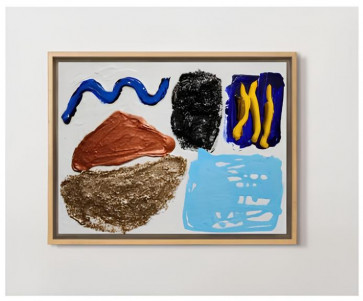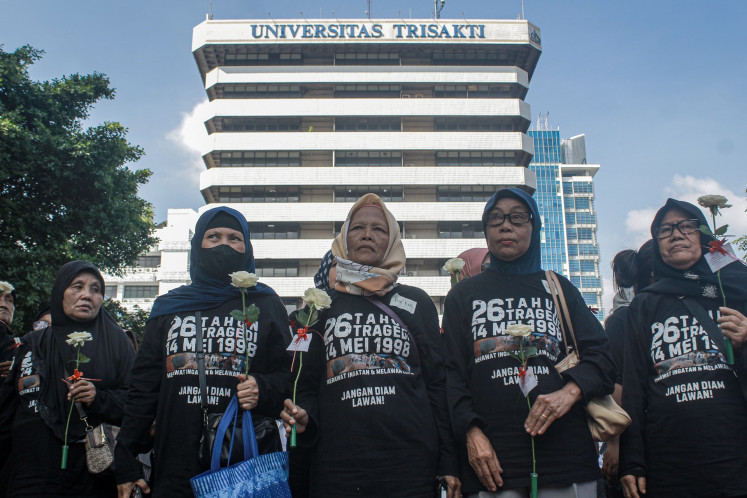Asians find their footing on the catwalk
The presence of Asian designers in the international fashion industry was a rarity in the past, mostly limited to the Japanese Issey Miyake and Yohji Yamamoto in the 1980s, and Asian-Americans such as eccentric Anna Sui and bridal designer Vera Wang in the 1990s
Change text size
Gift Premium Articles
to Anyone

T
he presence of Asian designers in the international fashion industry was a rarity in the past, mostly limited to the Japanese Issey Miyake and Yohji Yamamoto in the 1980s, and Asian-Americans such as eccentric Anna Sui and bridal designer Vera Wang in the 1990s.
But a new breed of Asian creative talents – whether native born or Western raised but of Asian descent – is gracing fashion magazines and making a splash in runway shows.
“I think it is because of globalization. People are becoming more aware of Asia. When you think about luxury in the past, all the names that come to mind are western brands. Now, things have changed very fast,” said Ong Soh Chin, a Singaporean veteran journalist and the PR director of the Asia Fashion Exchange event held in May.
A powerful celebrity stamp of approval has also helped bring attention to Asian designers. Michelle Obama stepped out in a custom-designed one-shoulder, floor-length white chiffon gown designed by the then unknown 26-year-old Jason Wu for her husband’s inaugural ball. The stylish US first lady later chose the Taiwanese-born, North American-raised designer’s creations on her first foreign trip to Europe, when she met Queen Elizabeth II in London.
She has also worn other Asian designers, including Japanese Junya Watanabe, Doo-Ri Chung (South Korean-born but raised in the US), Peter Som (born in San Francisco), Thakoon Panichgul (Thai born and US raised) and Prabal Gurun, who is Nepalese.
Also making an impression are Derek Lam and Alexander Wang who, like Som, are San Francisco born, and Thai-born and US-raised Phillip Lim. Medan-born Farah Angsana, who has lived outside of Indonesia from the age of eight, has also shown her designs in Paris and New York.
The meeting of east and west in young designers of Asian parentage has led to extensive articles in publications such as the Wall Street Journal and New York Times. They noted that they are from families who emigrated to the US with a wave of Asian immigration in the 1960s and 1970s.
Foreign born, they have been able to enjoy the more comfortable upbringings than their parents, with good educations and the option to choose careers outside of traditional business and science fields – including fashion
The same can be said for today’s cosmopolitan younger generation in Asia, who have grown up in booming economies in the new millennium and in a cyber-connected world.
“With all these factors coming together, there are lots of Asians going to Central Saint Martins, Parsons,” Soh Chin said of the famed design schools in London and New York City.
“They learn and start their own labels.”
In fact, the Times reported that 70 percent of international students at Parsons are from Asia.
In Asia itself, Soh Chin said many designer competitions were seeking local talent for international stardom, including the Star Creation contest at the Asia Fashion Exchange.
“It is about building local and Asian designers. We encourage the best Asian designers and show them to the world,” she said.
This year’s finalists hailed from Singapore, South Korea, China, Malaysia, Indonesia (represented by Natalia Kiantoro), Thailand and Japan. The winners were Roderic Wong from China, Thai Soravit Kaewkamon and South Korea’s Ko Youngji. The vice president for the Textile & Fashion Federation of Singapore, David Wang, praised Wong’s winning creations as clean, very urban and international.
“He did fabric manipulation. He used wool and silk as fabrics but he added textures,” he said.
He added that Youngji translated the Korean national dress of saekdong as modern, wearable, soft, fluid and very comfortable.
“Basically, all designs of the three winners are very sophisticated. Their collections will work in New York, Milan, London and Tokyo. They have a better grip on what will work on the international platform,” he said.









